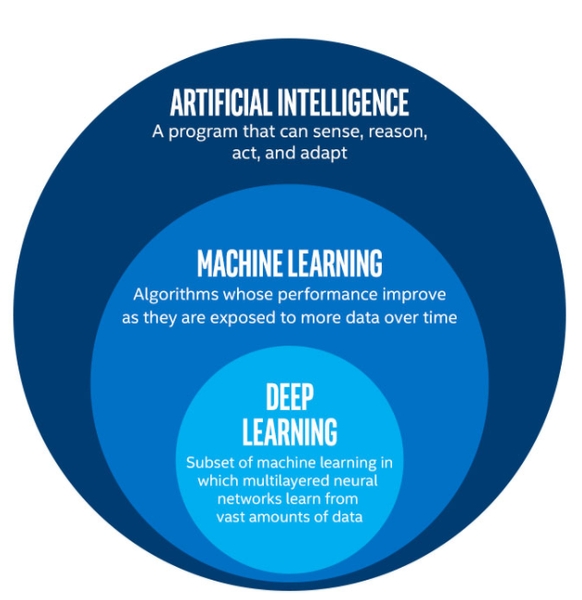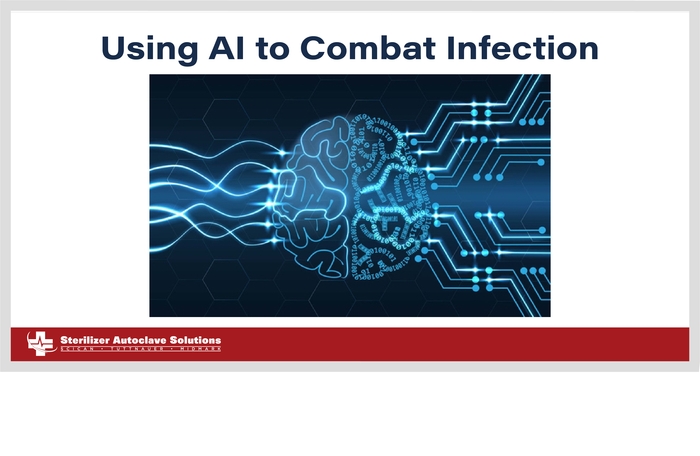Using Artificial Intelligence to Combat Infection
Artificial Intelligence is more prevalent in our lives today than it’s ever been. And for better or for worse, that same sentence will remain true even when you say it a decade from now. The advancements we’re making in the AI field as of late are shocking. With each new development, it just keeps improving, sometimes by the day. Each new development seemingly creates a new shortcut or creative way to help us with everyday things. No matter what your stance on it is, every part of it has its ups and downs, like anything does.
For some, that’s where the problem lies. Everyone knows where it started, but no one knows where it’ll end. When this technology is put to good use, it can make strides where you least expect it…hence our topic today…the very interesting ways AI is being used in the medical industry. NewsMedical.net has recently reported on various ways that we’re utilizing artificial intelligence to combat disease on the cellular level. Using different algorithms and machine learning technology, there are various ways that researchers are making waves in medicine. So we’d like to give you the rundown on what AI is up to besides writing your essays.
Background
Evolution of medical technology and research is always on the rise. Despite that, infectious disease is still a global issue. We find new ways to combat old and new cellular challenges, but sometimes even that’s not enough. When dealing with threats old and new, science needed a new way to go about it, so they’re looking to AI to find its benefits and cooperatively take on research. According to recent reports, it’s doing wonders. With the help of AI and machine learning, our comprehension of biology is improving. AI is accelerating progress that’s increasing the discovery of anti-infective medication and expediting diagnostic research.
So we’d like to go over the different ways that AI and machine learning are doing this and making waves in the industry. But first, we want to make a brief distinction between the two.
The Difference Between AI and Machine Learning
Artificial intelligence and machine learning are different than one another due to what they can both accomplish. AI is the intelligence of machines and software as a whole. And this is the technology that you’ll see very often in just your day-to-day alone. Recommendation algorithms on streaming services like YouTube, Netflix or Amazon. Your phone’s built-in artificial intelligence companion, like Siri, Alexa, Bixby and the like. AI solves problems using things like search, mathematical optimization, formal logic, artificial neural networks, statistics-based methods, operations research and economics. And it also utilizes practices of psychology, linguistics, philosophy and neuroscience, to name a few.
Machine learning however, is a field within the umbrella of artificial intelligence. You may also know it by the name “predictive analytics.” It’s the use of statistical algorithms that can perform tasks without specific instructions. Machine learning approaches have been used in things like large language models, computer vision, speech recognition, email filtering, agriculture and medicine. However, a parallel field of study with machine learning is data mining. Where the machine learns by focusing on exploratory data analysis in an unsupervised manner.
And now both of these technological advancements are now being put to use in the field of medicine. So let’s look at some of the ways these intelligent machines are helping us in new ways.
The Ways AI is Being Used
AI-based approaches can integrate large amounts of quantitative and omics data, making them particularly adept at dealing with biological complexity. It can predict things like anti-infective medication activity, drug-target interactions, and therapeutic designs.
Approaches to anti-infective drug discovery include phenotypic screens, target-specific screens, and anti-infective susceptibilities; models such as graph neural networks, random forest classifiers, and explainable models; and outputs such as growth inhibition and antimicrobial activity. These AI models can be applied to gene expression, mass spectrometry, and imaging-based diagnostics.
Artificial intelligence can elucidate infection biology and inform anti-infective treatment strategies by facilitating vaccine design and informing the use of anti-infective drugs. Infection biology inputs include macromolecular sequences, protein structures, microscopy, and morphology. AI models include network modeling, interaction modeling, and language modeling. And the outputs include; Immunogenicity, inter-protein interactions; pathogen killing and escape outputs include pathogen killing and escape mechanisms. Advances in merging artificial intelligence with biology, genetic expression analysis, imaging, and mass spectrometry have significantly improved our ability to identify infections and predict medication resistance.
AI is also used in vaccine design. Artificial intelligence models include sequence-to-function type models, classifier ensembles, and neural networks. For vaccine design, artificial intelligence can be used to supply various inputs such as nucleic acid or protein sequences, protein structures, and antigen-binding information. The outputs of artificial intelligence include antigen presentation, vaccine efficacy and translational efficacy.
The Ways Machine Learning is Being Used
Machine learning, a subset of artificial intelligence, uses data to train machines to make predictions. This technology has facilitated searches of small-molecule databases. Its approach to anti-infective drug discovery centers on training models to identify new drugs or uses of currently used drugs. A major advantage of ML methods is that they can screen large compound libraries at a speed and scale that would be impossible to achieve empirically. Along with that, it also has other uses like:
- Supervised machine learning algorithms examine structured and unstructured phenotypic information about glycan, protein, nucleic acid, and cells to uncover important relationships between hosts and pathogens.
- Supervised machine learning techniques like Vaxign-ML have helped to advance inverse vaccinology, which predicts antigens based on immunological and genetic data.
- De novo chemical arrangements, peptide chains and protein structures can be generated using generative machine learning models for assessment.
- Generative systems like GPT-4 and NVIDIA’s BioNeMo aid drug development by integrating data streams to improve our comprehension on the fundamentals of biological and chemical dynamics.
Final Thoughts
The use of AI and machine learning for day-to-day use has been on the rise for years now. But now we’re seeing the technology used in ways that benefit more than just the average person. By evolving our research methods in the medical industry. And there are many different ways that AI and machine learning have been used in medicine. And with the evolution of the technology, the ways that we use it will evolve too. Because with the biological threats we face, we can’t afford to be a step behind. We need to be a step ahead. The future of healthcare is uncertain. We can only hope that by using new methods like AI in different ways will help us shift the balance in our favor.
As always if you have any questions about this process or anything else please feel free to contact us and take advantage of our “FREE TECH SUPPORT.”
We also offer FREE VIRTUAL TECH SUPPORT to “See and Talk” with a “Real Time Live Technician” for any problems you may be in need of help with.
You can also use our “FREE MAINTENANCE PROGRAM”. Take the guesswork and worrying about what unit is due for maintenance and which maintenance cycle it is time for. We will keep track of all your autoclaves and let you know when it’s time for anything.


